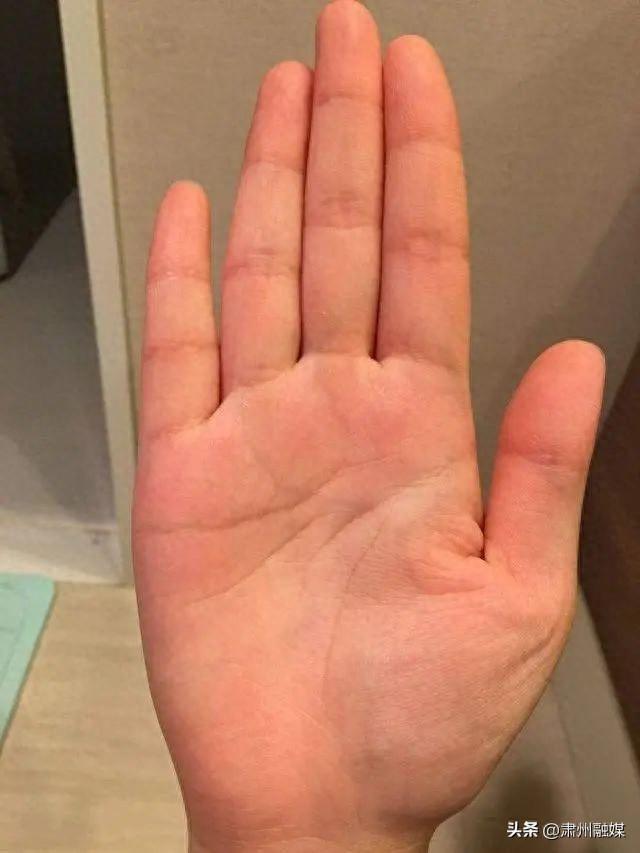Prolonged sitting leads to lumbar muscle strain? The rehabilitation doctor teaches you a set of movements, practice it!
Sitting for a long time, causing back soreness and pain? Be careful of lumbar muscle strain!Lumbar muscle strain is characterized by lower back pain or swelling, partial tingling or burning, without radiating pain or numbness in the lower limbs. The degree of pain varies from strong to weak, starting as intermittent pain, gradually becoming persistent pain, and gradually worsening
Sitting for a long time, causing back soreness and pain? Be careful of lumbar muscle strain!
Lumbar muscle strain is characterized by lower back pain or swelling, partial tingling or burning, without radiating pain or numbness in the lower limbs. The degree of pain varies from strong to weak, starting as intermittent pain, gradually becoming persistent pain, and gradually worsening. The pain varies with the weather, and worsens on cold or rainy days. The area where pain is felt is deeper, which worsens during activity and alleviates after bed rest.
Causes of lumbar muscle strain include prolonged sitting, standing, or frequent lifting of heavy objects, physical weakness, visceral lesions, increased weight bearing in the lower back during late pregnancy, and improper treatment of acute lumbar sprains.
10 actions to improve lumbar muscle strain
The Rehabilitation Medicine Department of the Third Affiliated Hospital of Guangzhou University of Traditional Chinese Medicine recommends a set of exercises that can help improve lumbar muscle strain.
1. Lie on your back and lift your pelvis
In the supine position, bend both knees and use the feet and back as fulcrums to lift the pelvis, then slowly lower it, repeating 20 times. This action can correct the anterior inclination of the lower pelvis and increase lumbar curvature.
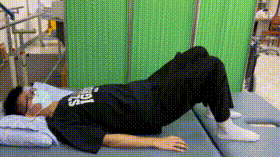
2. Knee hugging and chest touching
In the supine position, bend both knees, hold the knees as close to the chest as possible, then lower them down, doing 20-30 consecutive movements in one up and down motion. But be careful not to arch your back off the bed surface.
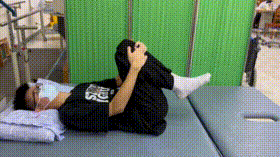
3. Side lying position leg lift
In the lateral position, straighten the upper leg, slightly bend the lower knee, lift the upper leg, and then slowly lower it, repeating dozens of times. When performing movements, the upper leg does not need to be quickly lifted up, but slowly retracts back to its original position.
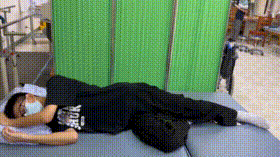
4. Two point support in prone position
Prone position with both knees and hands supported, while straightening the left upper and right lower limbs for 5 seconds. Repeat 10 times before switching to the other side. During training, keep your back tense and secure, and do not shake your hands or feet.
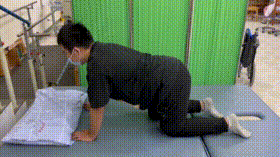
5. Straight leg lifting
In the supine position, press both hands under the buttocks and slowly lift both lower limbs. The knee joints can be slightly bent, then put them down and repeat 15 times.
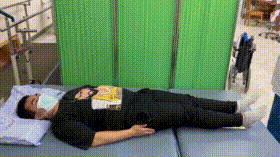
6. Leg pressure
Sitting on the bed with one knee slightly bent and the other lower limb extended, the torso tilted forward and pressed towards the extended lower limb, alternating on both sides. This action can also be performed in a standing position, with the lower limb placed on the back of the chair in front, tightened, and the other lower limb extended, alternating on both sides. The degree of stretching should feel a bit "tense" or "sour", but definitely not to the extent of "pain".

7. Knee sit ups
Supine position, bend both knees, tuck in the abdomen to lift the torso, and touch the knees with both hands. This action requires maintaining the knee at a 90 to 120 degree angle to the ground (or bed) at all times.
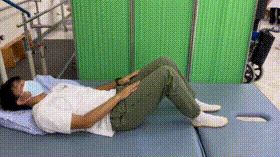
8. "Double Bridge" Exercise
Lie on your back, bend your legs, place your feet flat on the bed, and use force from your waist to lift your body off the bed surface. Try to arch your body and maintain balance. Hold for 30 seconds as once. 10 times per group, 2-3 groups per day.
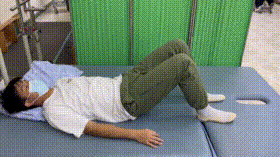
9. "Aerial Bicycle" Exercise
Lie flat, lift your legs up, and simulate riding a bicycle in the air, slowly and forcefully. Generally practice 20-30 times per group, 2-4 groups per day. This exercise mainly exercises the control ability of the abdominal muscles and waist, while effectively improving the strength of the entire lower limbs.
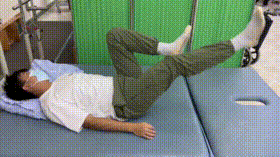
10. prone four point support
Lie prone on the bed, bend your arms in front of your chest, and use your elbows and toes to support and lift your body until it is in a straight line. Hold for 10 to 30 seconds once, with an interval of 5 seconds. 5-10 times per group. 2-3 groups/day.
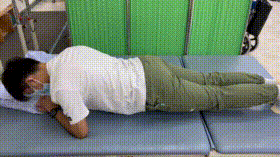
Reminder: The above training should be conducted under the guidance of a rehabilitation physician or therapist. When feeling abnormal in the body, one should immediately seek medical attention from a reputable hospital and not blindly exercise. Incorrect training not only fails to achieve the recovery effect, but also worsens the condition.
If there is lumbar muscle strain, it is also important to pay attention to:
1. Prevent dampness, cold, and exposure to cold;
2. Correct poor working posture;
3. Prevent overwork and pay attention to both work and leisure;
4. Use a moderately hard mattress;
5. Obese individuals should pay attention to weight loss.
Disclaimer: The content of this article is sourced from the internet. The copyright of the text, images, and other materials belongs to the original author. The platform reprints the materials for the purpose of conveying more information. The content of the article is for reference and learning only, and should not be used for commercial purposes. If it infringes on your legitimate rights and interests, please contact us promptly and we will handle it as soon as possible! We respect copyright and are committed to protecting it. Thank you for sharing.(Email:[email protected])











